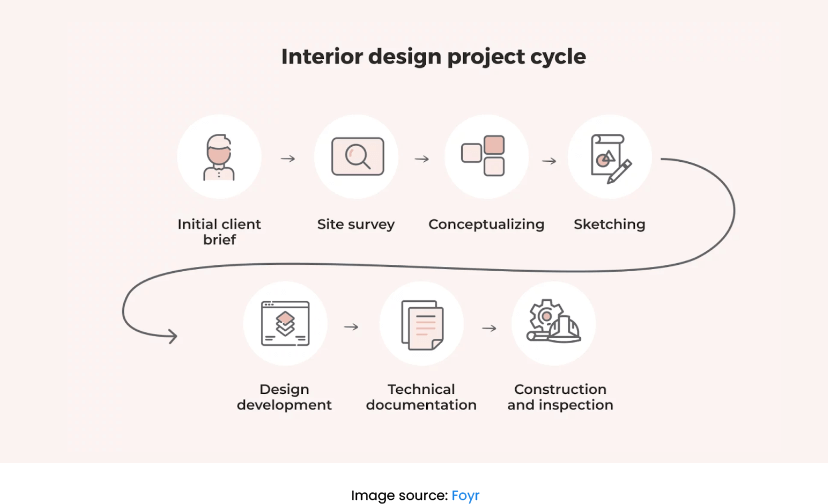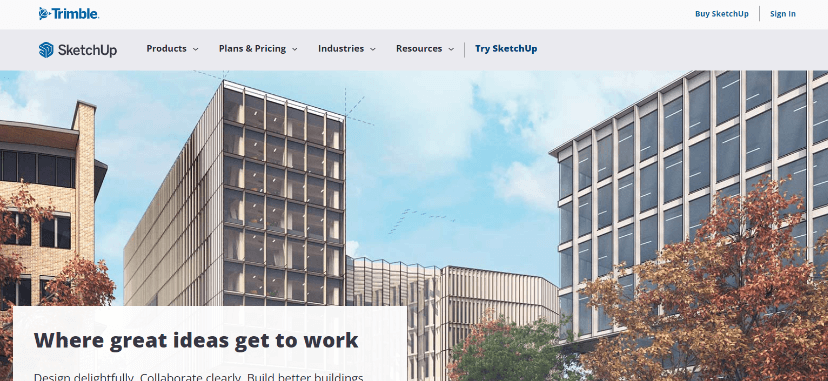We’ve all had one. We’ve all struggled with one. And yet maybe you’re here, realizing you’ve become one yourself. We’re talking about micromanagement.
No one sets out to be a micromanager – but it’s a lot more common and easier to do than we might expect! So how can you stop micromanaging? Like any personal growth, this one starts with awareness. Let’s take a look at some examples of micromanagement, discuss the potential causes, and walk you through some steps you can take to curb your micromanagement.

What is micromanagement?
There’s a fine line between being an involved and attentive manager and being a micromanager. So, what exactly is micromanagement? By some definitions, micromanagement is a frequent or excessive oversight of employees. It’s controlling, giving frequent criticism, or otherwise nitpicking an employee’s work.
That’s not to say there aren’t times or specific team members that might require additional review – but when it crosses into micromanagement is when that oversight is ongoing or applied broadly. Below are some examples of micromanagement so you might start to identify a pattern in your management.
- Unwillingness or inability to delegate tasks – even minor ones – to the team for fear that it won’t be done correctly or as desired.
- Asking to be copied on all emails or any team communications
- Constantly checking employee progress on a task, asking for updates, or reviewing work in progress to ensure it’s being completed correctly.
- Constantly checking on employee whereabouts.
- Taking on tasks that another team member is already handling.
- Correcting minor errors or scrutinizing work for even small tasks
- Refraining from sharing important knowledge or information with the team.
- Unwilling to compromise on decisions or consider input from your team.
If you notice some of these examples of micromanagement apply to you, here are some other useful ways to determine if you might be a micromanager.
- High employee turnover or people asking to be assigned to new teams
- Having a general feeling of distrust or doubting the competency of your team
- Feeling burned out in your role – frustration that your efforts aren’t working or team members aren’t taking initiative or succeeding

What causes micromanagement?
Before getting into how to prevent micromanagement, it’s essential to understand the underlying causes of why you’re overly involved or what you fear might happen if you step back.
The reason one person might micromanage is different from the next! It’s also entirely possible some of the things that make you successful as a manager could be part of the reason you’re micromanaging – so don’t necessarily think of this as something that needs to change, but just as something to bring awareness to.
- Fear of losing control. A fear of losing control is a pretty common reason someone might micromanage. While the origins of this fear vary, the awareness alone can be invaluable. Notice when your fear of losing control comes up and what emotions accompany it. Take responsibility for and manage these emotions before bringing things to the team.
- Inexperienced team. It’s also possible that you micromanage because you’re working with an inexperienced team that requires a lot of guidance and oversight. In this case, it’s not to say that you need to step back completely, but your role should still be to give the team the tools and guidance they need without wasting your energy on small details. A great manager can empower team members at any skill level to become better employees.
- Insecurity. Insecurity can also be an underlying cause of micromanagement. Perhaps you worry about looking bad if the team fails or that an employee might outperform you. Rather than trying to eliminate insecurities, a level of awareness can help. Experiment with giving an employee the spotlight or presenting imperfect work, and see what arises in you. With small steps, you can build greater confidence in yourself, which you’ll pass to your team.
- Inexperienced management. Another reason you might be micromanaging is a lack of management experience. Management is a skill that takes time and effort to do well. When starting out, it can be hard to tell what appropriate involvement looks like. In these cases, look towards metrics like employee satisfaction and turnover, or ask for outright feedback to improve. Get the training you need or work with a mentor who can give you the tools to step out of a micromanagement role and become a more effective manager.

How to prevent micromanagement
Alright – so now that you’ve reviewed some of the indicators of micromanagement. Do you notice the tendency in yourself? Below are some steps you can integrate into your work that will help you step back, instill your team with trust, and, hopefully, improve the dynamic for everyone.
- Reflection. Before getting into more specific feedback, it can be helpful to start this process by creating a more comprehensive inventory of your management style. Start by listing out some of the things you do well alongside some of the things you’d like to improve upon. Spend time reflecting on your reasons for micromanagement – evaluating insecurity or a need for control – so you will better notice when they’re flaring up at work. You also might review your workflows – how you delegate tasks, check-ins with team members, processes, etc. – and notice which ones tend towards micromanagement. Start with those to make the biggest impact.
- Get feedback. Another thing a confident manager can do is bring their team into the feedback process. You might tell your team this is something you’ve noticed in yourself or issue a more generic feedback survey to understand better how employees feel about their work and your management style. If there has been a culture of distrust or criticism, keep in mind it might be hard for employees to speak freely. In this case, it’s best to create an anonymous process where honesty is encouraged. If you’re not ready to ask your team, you might also consider asking a trusted colleague or mentor to observe how you’ve been managing and have them offer suggestions based on their experience. With feedback, you’ll better understand the greatest opportunities for improvement, so you can start there.
- Building trust. When you’ve long enforced a culture of distrust or approval-seeking, it might take time for the dynamic to evolve. So, remember that throughout this process, you’ll be rebuilding trust. It starts by empowering your team to be more autonomous or take the initiative. If you’ve been critical or given excessive feedback in the past, set reasonable expectations and limit feedback on work that otherwise meets the criteria. Create a culture where failure or mistakes aren’t punished but learned from. Building trust might also look like removing yourself from some core communications. Step out gradually of things like having the final proofread of a document or getting cc:’d on non-essential emails. Give your team space to solve their challenges, and reward them when they do. With time, you might find that employees who were timider or approval-seeking can flourish and contribute more than they were previously able.
- Set priorities and learn to delegate. One of the core challenges in micromanagement is setting priorities and learning what task to delegate. For example, a micromanager might evaluate all tasks to be important enough to require their input and involvement. However, proper prioritization should allow a manager to take a step back from the day-to-day to focus on higher-priority items and more strategic decisions. So start by setting priorities – these can either be the tasks that are most challenging or critical to project outcome – and focus on those. Anything that isn’t a high priority should be delegated, rescheduled, or eliminated. Effective delegation requires that your team has adequate skills and resources to be successful, so in this process, you can also take stock of your resources and what is needed to hand these off so you can better remove yourself.
- Learning your team’s limits. Different employees will need different levels of management. For example, an intern might benefit from close supervision and regular check-ins, while a senior employee without performance issues should benefit from more autonomy and authority. Before starting this process, you might take stock of your current team and understand their skills, limitations, or any known performance issues. Equity is important (that rules for the team are consistently applied). Still, for more junior roles or team members with documented performance issues, it might be fair to leave additional oversight until they improve.
- Set expectations and communicate changes. If you’ve been working under a different team culture, setting expectations and communicating changes is another important phase of the process. For example, if a task used to require your approval but can now advance without it, let your employees know about this change. Set expectations on what steps they can skip and what milestones are still necessary. Be open that the process might evolve, but take your time to see the changes before reverting to old tendencies.
- Become a better project manager. Most of these tips on how to stop micromanaging are more about stepping back than adding something new. But there is one thing you can do more of. As you give employees more agency, you might create systems that support them on things you used to. Create detailed documentation or protocols so they have the necessary information to make decisions or do things for themselves. Delegation also requires getting good at project management – understanding all tasks, possible roadblocks, resource management, etc. – so that you can oversee a project without having your hands on everything. Consider introducing a project management tool that employees need to keep updated so you can keep an eye on project performance without hovering over the project in a more obvious way.
- Take it slow. With the above in mind, it’s also critical that you take this process slow. Change takes time. Simply removing yourself could set the team up for failure and push you back toward more micromanagement. With this in mind, start by pulling back on less important projects or for shorter periods. Observe how it goes, and aim to understand how you might improve things or make systemic changes that make this change more sustainable. You might even experiment by going on vacation and having some key metrics in place that will help you gauge how your team performed. By knowing both your team’s and your personal limits, you’re more likely to succeed in the long term.
- Be patient with yourself. Like any habit, micromanagement will take time and consistent effort to unwind. The fact that you’re taking the time to work on it is a step further than many managers ever get. While you’re building trust, stepping back, and setting priorities, remember to give yourself some patience. The goal isn’t perfection but progress. Celebrate the times you practice your new techniques, and be compassionate with yourself in times that you don’t. With consistent practice, it will only get easier!

An employee perspective: how to tell your boss to stop micromanaging
Working under a micromanager can be exhausting. It might feel that your work is never good enough or you don’t have the autonomy to do your job effectively. So how do you tell your boss to stop micromanaging?
Hopefully, parts of this article can shed some light onto why they might be micromanaging in the first place and give you some ideas of where they could do less.
If you have a boss open to feedback, addressing their management style might be as simple as meeting with them. Choose a recent project as an example, and start there. Share the parts of their management style that you appreciate, and explain how it has been challenging. It can be helpful to use statements like “I feel…” to own that it’s just your experience with the situation. For example, “I feel having to cc: you in emails to my client reduces my credibility and makes me feel like you don’t trust me.” Reinforce the reasons you were hired, your track record, and your experience. Explain how their management style might limit the team (delays, lack of confidence, lack of authority) and suggest one or two changes that might make things easier for you. Ask if they’d be open to these changes on a short-term basis so you can check in again later.
But what if you’re working under a boss you don’t trust or feel will make the changes? A conversation is still on the table. However, in these cases, you also might consider looking for a new role, team, or organization that better aligns with you. Your manager can play a huge role in career satisfaction! If you’re ever feeling undervalued, insecure, or unsupported, knowing there are always other organizations that would be a better fit for your skills should be helpful.
Conclusion
While micromanagement isn’t often what we strive for, it’s something that can change with awareness, consistent effort, and patience. The sooner you can understand the root of it in yourself and the ways it shows up in your work, the sooner you can leave it behind in favor or a more supportive and empowering management style.
Giving people trust gives them the space to grow, which should be the ultimate goal of any manager.






















































